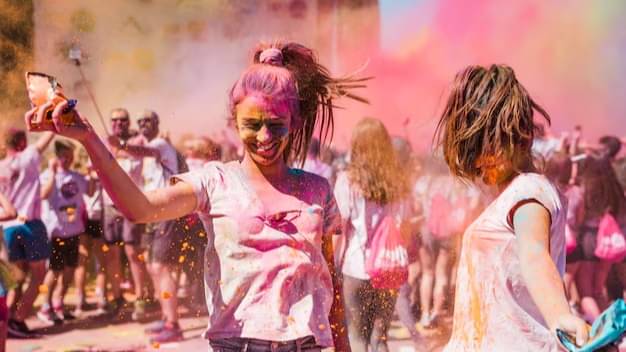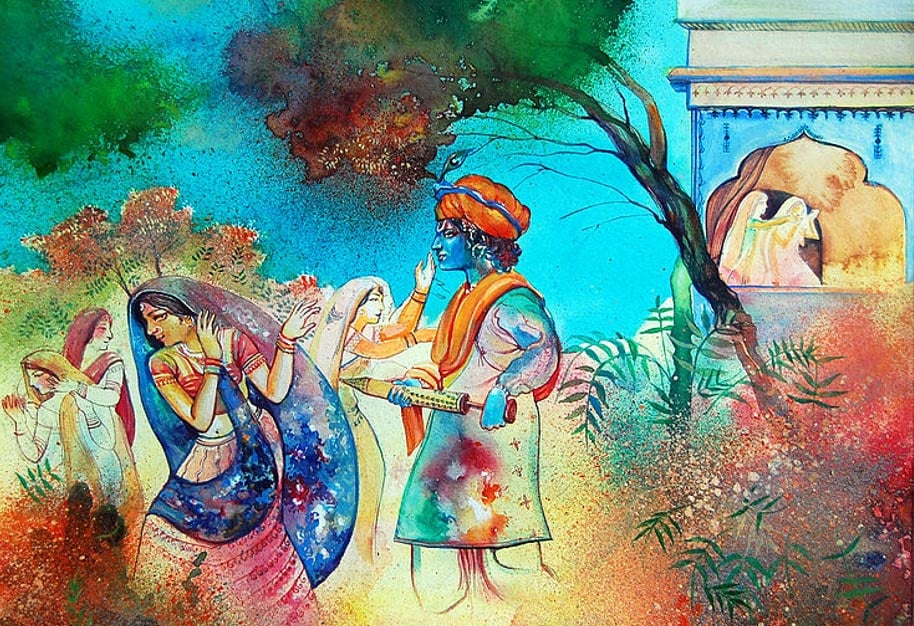Gallery
Photos from events, contest for the best costume, videos from master classes.
 | |
 |  |
.jpg?$p=2292f18&w=852&q=0.8) |  |
 |  |
 |  |
 |  |
Holi Festival in India. Holi, this special festival of colours is famous among people of India for the great and interesting rituals. The splash of colors over each other, feast of delicious dishes, wearing new clothes are some of the really attention grabbing rituals of the festival. Know More The Holi Festival in March 2013 at the Sri Sri Radha Krishna Temple in Utah County, Utah. Holi is celebrated as a social event in parts of the United States. [139] For example, at Sri Sri Radha Krishna Temple in Spanish Fork, Utah, NYC Holi Hai in Manhattan, New York [140] and Festival of Colors: Holi NYC in New York City, New York. [139] [141 Holi, often called the "festival of colors," is a vibrant Hindu celebration that marks spring’s arrival, the triumph of good over evil, and the love between Radha and Krishna. Holi is a Hindu spring festival celebrated in India and Nepal on the full-moon day of Phalguna (February–March). On this day, participants throw colored water and colored powders on one another, and the usual societal norms are set aside. Holi’s traditions vary throughout the country and have their roots in Indian mythology. In many places the festival is associated with the legend of Hiranyakashipu, a demon king in ancient India. Hiranyakashipu enlisted the help of his sister, Holika, to kill his son, Prahlada, a devoted worshipper of Vishnu . Hindu Mythology News: Holi in India, a festival of colors, celebrates spring with powder. It symbolizes righteousness, featuring stories of Krishna, Radha, and Lord Shiva. Holi, the festival of colours, will take place on March 14, this one of India’s most vibrant and joyous celebrations, marking the arrival of spring, renewal, and the triumph of good over evil. The origins of Holi date back to ancient India, with references found in various texts and scriptures. The festival is believed to have started as a harvest festival, symbolizing the end of winter and the arrival of spring. The ancient agrarian society celebrated the bounty of the harvest, and colors were used to symbolize the vibrancy of life. It symbolizes the victory of good over evil, the arrival of spring, and the fostering of unity and brotherhood among communities. Let’s delve into the captivating history, legends, significance, and traditions of Holi. History of Holi: Festival of Colors 2025. The anticipation mounts for Holi, a globally renowned festival steeped in tradition. History of Holi: The Story Behind the Festival. The origins of Holi date back to ancient Hindu mythology. The most popular story associated with Holi is that of Holika and Prahlad. The Legend of Prahlad and Holika. The story is rooted in the Bhagavata Purana and revolves around a demon king named Hiranyakashipu, who ruled with cruelty and tyranny. The ancient beginnings: Tracing the Holi festival India history. Holi is not just a festival—it’s a cultural legacy that has been celebrated for over 2,000 years! References to Holi can be found in ancient Hindu scriptures like the Puranas, as well as texts from early Indian scholars like Kalidasa. The origin of Holi traces to time immemorial. The ancient festival of colours finds its mention in numerous scriptures, Jaimini’s Purvamimamsa-Sutras and Kathaka-Grhya-Sutras with detailed descriptions of the celebration of the festival. It has also been mentioned in much-revered texts such as the Narada Purana and Bhavishyad Purana. Introduction to Holi: The Festival of Colors. Holi, widely known as the "Festival of Colors," is one of India's most vibrant and joyous celebrations. This vibrant festival signifies the arrival of spring, the triumph of good over evil, and the strengthening of social bonds. Over the centuries, Holi has evolved from its ancient origins to become What Is Holi, the Festival of Colors? Holi, or the Festival of Colors, marks the beginning of spring and the end of winter. It's a celebration of rebirth and new beginnings and a time to get rid of the bad and the negative. Let’s explore the origin of Rangwali Holi. ALSO READ: Magh Purnima 2025: Snow Moon To Appear On Magh Purnima Night, Know Date, Time, And Everything. The Beginning Of Holi: The history of Holi is closely associated with Lord Krishna. According to ancient legends, the festival of Rangwali Holi began with Lord Krishna and Radha Rani. Braj Holi 2025 history and signifcance. The Braj region, including Mathura, Vrindavan, Barsana, and Nandgaon, holds immense significance in Hindu mythology, as it is closely linked to the life of Is Holi On March 24 or 25 in 2024? Choti Holi and Badi Holi (Dhulandi) Date, Holika Dahan Timings, Significance, and Colours Festival in India; Holi 2024: Date, History, Rituals, Puja Timings and Significance – Celebrate the Festival of Colors; Best Holi Recipe 2024: How to Make Delicious Thandai Phirni for the Festival of Colors It symbolizes the victory of good over evil, the arrival of spring, and divine love. While there are no factual evidence of Holi history, some answers to the popular question – why is Holi festival celebrated include: 1. The Holi Dahan Story (Victory of Good over Evil) This is the most widely accepted mythological origin of Holi. Students watch the video again and decide whether statements about Holi’s history and traditions are true or false. After that, students discuss key questions related to Holi, including the festival’s origins and significance, how Holi compares to festivals in their own culture, whether they would like to experience Holi firsthand ALSO READ: Holashtak 2025: Know Date, Significance, Rituals, And All About The Auspicious Days Before Holi. The Ancient Origin Of Holi: According to ancient legends, the festival of colours was first played not on Earth but in Devaloka (the celestial realm). Several mythological tales link Holi to Lord Shiva and Lord Vishnu.
Articles and news, personal stories, interviews with experts.
Photos from events, contest for the best costume, videos from master classes.
 | |
 |  |
.jpg?$p=2292f18&w=852&q=0.8) |  |
 |  |
 |  |
 |  |